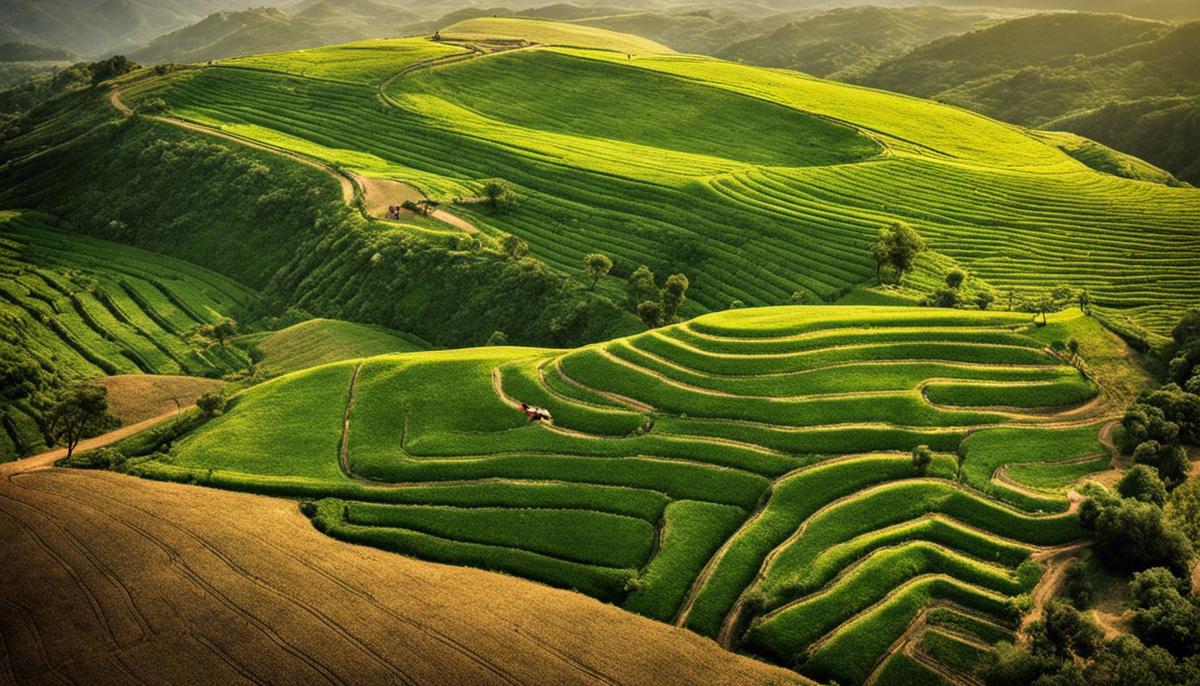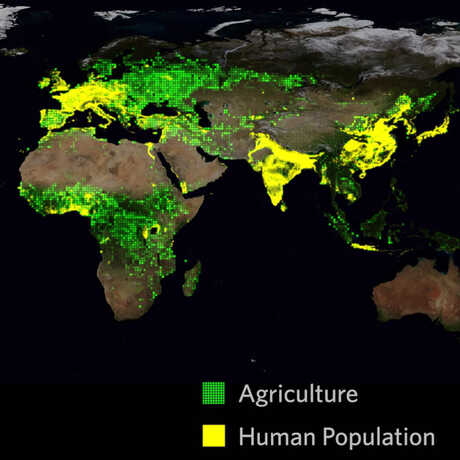

Agridisk
Egypt - Alexandria

Food security and Population Growth Are The Biggest Challenges Of The 21 Century
Description: As we navigate the complexities of the 21st century, two critical challenges loom large on the global stage: food security and population growth. A profound understanding of these issues warrants an exploration into their basic tenets. The fundamental concepts of food security, involving availability, access, utilization, and stability, are crucial to grasp. Concurrently, an insight into global population dynamics is imperative. Equally important is understanding why these elements present such prominent hurdles in the contemporary century. Our investigation will delve into the profound impacts of rapid population escalation on food security, meticulously analyzing the resultant strain on existing food systems and the inescapable growth in food demand. In the throes of accelerating global population growth, food security presents itself as an issue of paramount importance, commanding the rapt attention of researchers, policymakers, and academia. Borne by an unwavering commitment to the pursuit of meaningful knowledge, this discourse provides an exposition of food security and its complex interplay with population growth, underscoring its consequential role in humanity's future. To comprehend the term 'food security,' it must be construed in its broadest sense. The United Nations’ Food and Agricultural Organization (FAO) elucidates that food security obtains when all people, at all times, have physical and economic access to sufficient quality and quantity of safe, nutritious food that meets their dietary requirements for an active, healthy life. Failing in any of these dimensions implies a degree of food insecurity. Thus, meeting global food security targets demands consideration of substantial factors including food availability, accessibility, utilization, and stability. On the other hand, population growth refers to the surge in the number of individuals in a population, primarily a result of birth rates exceeding mortality rates. UN projections anticipate the global population reaching 9.8 billion by 2050. This escalating demographic pressure presents formidable challenges to food security, hence rendering it a topic of critical concern. Delving into the chord of correlation, the relationship between population growth and food security is influenced by a myriad dynamic factors. The Malthusian theory posits that population growth would outstrip food supply, plunging the world into the abyss of famine and poverty. Although much debated and nuanced with time, this theory sheds light on the challenge posed to food security. A burgeoning population heightens the demand for food, amplifies the pressure on resources required for food production thereby wresting the delicate balance of ecosystems, and exacerbates the vulnerability to persistent price fluctuations in global food markets. Conversely, underpinning this complexity is the idea that population growth is not inherently deterrent to food security. For example, increasing consumption could stimulate technological advancements in agriculture, thus enhancing productivity. However, this necessitates effective policies and investments to harness this potential, making the pursuit far from straightforward. From an international standpoint, it’s worth recognizing that food security and population growth each exhibit a striking divergence in the global landscape. While highly developed countries grapple with the twin conundrums of aging populations and post-consumer food waste, many in the Global South combat rapid population growth, poverty, and alarming rates of malnutrition. Thus, policies addressing these intertwined issues must be carefully crafted to accommodate their vastly differing regional contexts. In conclusion, as society navigates the turbulent currents of the 21st century, the significance of comprehending the interplay between food security and population growth cannot be overstated. To ensure a sustainable future, it compels scientists, technocrats, and societies to transcend traditional boundaries, encouraging interdisciplinary approaches and global cooperation. However complex or formidable, tackling these challenges remains a veritable testament to humanity's capacity to adapt and endure. When embarking on this pursuit, it is key to remember that in the intricate web of life, everything connects. As population grows and evolves, so too must our solutions for maintaining food security. The time to act is now. There is simply no margin for delay. The very crux of our continued existence hangs in the balance. This is not just a scientific concern. It is a human concern, resonating with an unerring cry to safeguard the welfare of our global family. The ongoing ripple effect caused by brisk population growth has cast a long shadow over our planet's food security. Population trajectories, and their realm of influences, are complex; they encompass an array of elements from fertility rates to mortality rates, immigration, to societal behaviors. And as these population dynamics inevitably shape our global food security, it behooves us to delve into their intricate interlinkages. In the exploration of these intersections, the role of urbanization, an offshoot of population growth, emerges as critical. Rapid urbanization, accompanied by escalating population densities, poses a conundrum. On one hand, it creates economies of scale, thus presenting an opportunity for more efficient food distribution and reducing distances food must travel. On the other, urban sprawls often engulf agricultural land, thereby shrinking the amount of land available for cultivation. The interplay between technological advances and population dynamics likewise demands scrutiny. Technological progress, such as in precision agriculture or lab-grown food, can diminish the population pressure on food resources. Unfortunately, these innovations are often beyond the reach of those hardest hit by food insecurity, thereby exacerbating existing disparities. Social norms and behaviors too, a less commonly examined variable in the population-food security nexus, have considerable implications. Dietary transitions towards meat-heavy diets, promoted by rising living standards in burgeoning populations, strain natural resources due to the high resource-intensity of livestock farming. Gender dynamics also underpin population-food security relationships. Women, bearing disproportionate responsibility for food production in many traditional societies, face significant hurdles in accessing resources and technology to increase agricultural productivity. Simultaneously, the gender inequity embedded, often invisibly, in population growth patterns further exerts pressure on food security dynamics. Climate change, a tinderbox in the population-food security nexus, jeopardizes food security at multiple levels. Scout for instance, the increased vulnerability to floods and drought brought on by population pressure on fragile habitats. Such scenarios damage agricultural activity, heightening the risks of food insecurity. Addressing the complexities of these intersecting variables necessitates robust data on global agriculture and population dynamics alike, fed into flexible, adaptive policy mechanisms. More importantly, it calls for evoking a commitment to sustainable development that transcends political, economic, and cultural divides. Scrutinizing such interrelationships unveils a two-way street between global food security and population growth. While population growth can exert pressure on food systems, it can also stimulate advance. To navigate these challenging crossroads, comprehensive strategies need to holistically blend population management measures, food development policies, and climate change adaptation. Collective and concerted efforts will be critical in steering the course towards a world that nourishes everyone, where every individual can bloom to their fullest potential. In this multi-faceted challenge lie the roots of our shared future. For a resilient tomorrow, the world must recognize, today, the inextricably intertwined destiny of population growth and global food security. Solutions will emerge not in isolation but in the embrace of the whole, in the interconnected dance of a world that is populated, fed, and nurtured. Understanding Globalization and its Influence on Food Security: As we delve deeper into the intricate nexus between globalization and food security, it becomes outrightly obvious that the subject is more complex and multifaceted than traditionally assumed. Globalization, by its nature, characterizes the shrinking of the world and a significant increase in interconnections, political decisions, trade agreements, and economic strategies that transcends national borders. Anchoring these realities to our discourse on food security exposes the intertwined dimensions of the two phenomena. At its crux, globalization can potentially enhance food security through the liberalization of trade, leading to a wider variety of food products being made available for consumers globally. The X theory resonates explicitly with this perspective. Enhanced food access and diversified diets are foreseeable benefits for countries with comparative advantages in food production. Yet, this can spur concerns on dependency on food imports and vulnerability to volatile international food prices, particularly for developing nations. Judicious analysis of globalization indicates that it affects the distribution and accessibility of food in several ways. Harmonized agri-food standards, while ensuring quality, might marginalize small-scale farmers from the global market. A related issue rides on the landscape of intellectual property rights in agriculture, chiefly, genetically modified crops, potentially leading to situations of monopoly or oligopoly. This arena also commands a disquieting call for ethical considerations, notably on the risks around biodiversity loss and potential health hazards. Unregulated globalization in tandem with insufficient policy interventions can set off concerns around land grabbing and agrarian distress. Large-scale acquisitions of arable land by multinational corporations in developing countries to secure their food supplies or for biofuel production often deprives local farmers of their livelihoods and leaves them landless. Consequently, it impedes local food production and undermines the self-sufficiency of these nations. Adding a micro-layer into this compendium of dynamics, it is insightful to explore gender paradigms and their bracing effect on globalization and food security. Women play a crucial role in the global food system, primarily as farmers, laborers, and caregivers. Despite their significant contribution, women face systemic injustices on multiple fronts, including lower wages and limited control over resources. Hence, global strategies need more gender-sensitive policies. Moving the gaze toward climate change, the knot tied with food security becomes heavier. Erratic weather patterns and more frequent extreme weather events triggered by climate change threaten agricultural productivity- an adversity amplified by the carbon-intensive practices of the globalized food system. The exacerbating climate change poses more challenges in maintaining a harmonious food-water-energy nexus, reiterating the need for thoughtful planning and comprehensive strategies. In essence, globalization is a double-edged sword for food security. It promises potential benefits but also comes with significant risks that vary across diverse socio-economic contexts. As we tread the path toward sustainable development, the urge for a holistic, nuanced understanding of the relationship between globalization and food security becomes more pressing than ever before. The need of the hour is to promote responsible globalization that embodies the principles of sustainability, social equity, and inclusivity to consolidate our efforts in promoting global food security and ultimately, human dignity. Beyond the well-documented factors contributing to food security disparity, the menace of climate change has vital, albeit less-discussed, implications for global food security. Climate change continues to disrupt the delicate balance of the earth's ecosystems—warming temperatures, changing weather patterns, and increasing frequency and severity of extreme events—are hardly innocuous phenomena. Significantly, climate change affects crop yields and livestock productivity. Rising temperatures, erratic rainfall, and prolonged drought conditions impair production in many regions. These adverse conditions jeopardize food availability due to the high dependence on rain-fed agriculture, particularly in developing countries. The impact on livestock is analogous, with changing weather patterns posing health risks and lowering productivity, which can potentiate availability issues. Soil degradation is another climate change repercussion often overlooked. Soil is undeniably a fundamental base for food production. Increasing soil temperature, changes in precipitation, and an elevated CO2 concentration affect soil quality and nutrients, hence hailing implications for both crop yield and nutritional quality. Exacerbated soil erosion due to instances of extreme weather events can lead to arable land loss, thus directly impinging on long-term food security. Beyond these, climate change can compound current vulnerabilities and widen disparities in food accessibility. Anthropogenic climate changes can trigger or exacerbate conflicts over finite resources, affecting regions' economic stability and, consequently, vulnerable populations' ability to access food. Also worth noting is the exacerbation of health inequalities resulting from climate-linked malnutrition and illness which can impede individuals' ability to utilize food properly, affecting food utilization. Climate-driven migration can further compound these challenges. Population displacement due to climate change-driven factors such as sea-level rise, extreme weather events or desertification can interfere with the stability in food supply chains, contributing to temporal and spatial mismatches between food availability and demand. Apprehending these implications is crucial for cogent climate change mitigation strategies. An excellent place to start is developing and popularizing climate-smart agricultural practices. Such practices encompass several aspects, including precision farming, soil and water conservation measures, agroforestry, and improved livestock management. These methods can enhance crop yields while reducing greenhouse gas emissions, contributing to sustained productivity and resilience to environmental changes. There is a profound need for inclusive food policies that account for climate change and promote sustainable agriculture—policies that incentivize 'green practices,' discourage waste, and advance equal distribution of resources. Parallelly, investments in comprehensive data collection and monitoring systems can facilitate adaptive policies' responsiveness to shifting dynamics. Promoting dietary diversity could be another viable strategy. Consuming a wider variety of crops can lessen reliance on a particular crop, thus providing a buffer against climate-induced crop failures. This can diversify income sources for farmers and enhance nutritional intake for consumers, encouraging both economic and nutritional resilience. In conclusion, the wide-armed embrace of interdisciplinary cooperation, innovative scientific solutions, and policies that sit at the nexus of climate change, food security, and population growth appears a pragmatic choice. As earth's custodians, our collective efforts towards ensuring a nourished, resilient, and secure future are more important now than ever. Firstly, instituting inclusive fiscal policies is vital. Tax incentives and subsidies can be conversant tools to spur growth in low-income and marginalized areas. Policies that promote economic empowerment and self-sufficiency among the most vulnerable populations, like small-scale farmers, can enhance food accessibility and security. Overlaying this with agricultural educational programs can contribute further towards stimulating local economies and promoting food self-sufficiency. Secondly, investment in agricultural research and development (R&D) is critical to tackling the challenges of food production amid population growth. The development and deployment of high-yielding, disease-resistant, and climate-resilient crop varieties can significantly improve food security. Similarly, strategies targeted at improving livestock health and productivity can also contribute particularly in regions where animal husbandry is prevalent. Moreover, policies aiming at balanced urbanization are crucial to the maintenance of food distribution and availability. Enhancing infrastructure—such as roads, storage facilities, and marketplaces—can boost rural economies, allow for better distribution of food, and reduce post-harvest waste, a significant contributor to food insecurity. As globalization continues to impact global economies, policies should also prioritize protection of small-scale farmers from unfair competition. Measures may include enforcing fair trade practices and intellectual property rights or buffering against the effects of foreign agri-food standards. Another significant area of policy intervention involves the promotion of family planning initiatives. Providing access to education and a range of contraceptive options can aid in population control, an essential variable in the food security equation. As empirical studies have shown, lower population growth rates often correlate with improved food security outcomes. The compounding effects of climate change require policy responses that reflect a clear understanding of these alignments. Mitigation strategies should integrate climate adaptation into sustainable agricultural practices and the enhancement of natural resources upon which food production depends. Context-specific approaches—like agroforestry in one region, or sustainable irrigation in another—may provide the flexibility necessary to achieve these goals. In conclusion, the interplay between food security, population control, and a range of social-economic and climate factors requires an integrative policy approach. There's a need to underscore the importance of global collaboration and evidence-based decision making as we seek to forge sustainable solutions to the challenges of food security and population growth. Each policy has its role to play, but their collective and coordinated effect will be essential in promising a nourished and resilient future. As we thunder into the future, the pressing issues of food security and population control command our collective attention and action. Rigorous dissection of policy interventions, alongside an analytical lens applied to past successes and failures, deepens our comprehension of the socio-economic and political implications of these strategies. Practical steps emerge from such understanding, paving the way towards global food security and sustainable population growth. The challenge of our time pivots on creating resilient food systems capable of feeding a burgeoning population, even in the face of adversities such as climate change. The future, while steeped in challenges, also bristles with hope, innovation, and the human spirit of perseverance. Agricultural production needs continuous development day after day. This is due to several reasons, including climate change, which is expected to change by 2 degrees Celsius in 2050, as well as a decrease in the agricultural area due to construction and urban expansion, with a decrease in grains and crops by 5%, while the world population It is constantly increasing by 15% until the year 2050, so we need to increase food production by more than 40% from our current production. This introduction is a warning and the importance of agricultural development, so that farmers become more productive, and in this article we will tell you the importance of developing agricultural methods and that they are The only solution to face the pressures of population increase and climate.Defining Food Security and Population Growth
Food Security and Population Growth: An Inextricable Nexus of Critical Concern

Influence of Rapid Population Growth on Food Security
Addressing the Elephant in the Room: Population Growth Impact on Global Food Security
Globalization and Food Security

Food Security Response to Climate Change

Policy Interventions for Food Security and Population Control
Building on established facts, various policy interventions stand to be deployed to ensure food security and control population growth. These interventions must be strategic and inclusive, addressing the unique needs of different regions and demographics in order to achieve sustainable outcomes.


Food security and Population Growth Are The Biggest Challenges Of The 21 Century